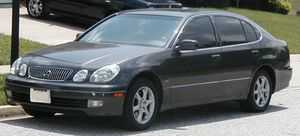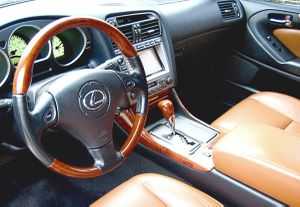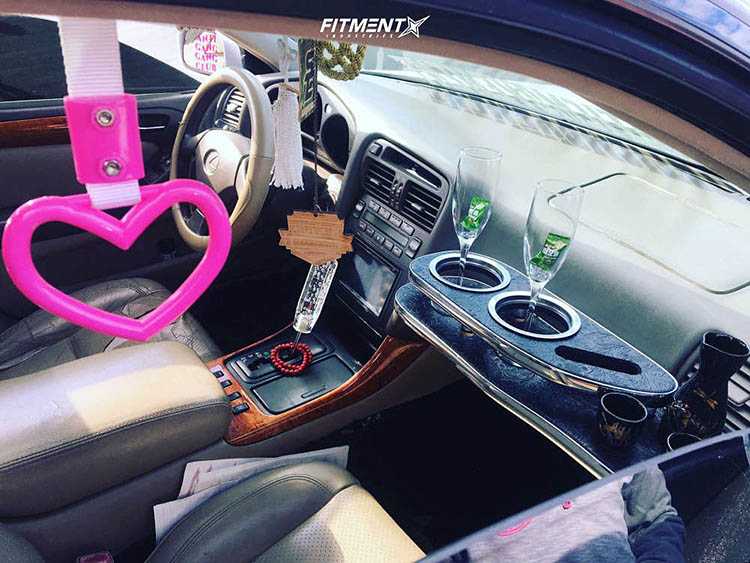Latest articles
-
Nissan’s 350z is the JDM performance car of this decade and to celebrate we have assembled all the information you will ever need to know on the mighty Z33.
-
Looking for a performance G37 exhaust? You’ve come to the right place. We compare nine of the best G37 exhausts available to help you find your perfect system.
-
We deep dive into everything you need to know about Forza Horizon 5 Houses. Learn why all the houses in Forza Horizon 5 are essential and how to unlock them.
-
We present fifteen of the best JDM cars of the nineties and check out the latest news on their upcoming state-of-the-art successors.
-
This year marks what would have been deceased action hero Paul Walker’s 50th year and to honour that we have assembled 43 of his most memorable quotes.
-
Eager to upset your rivals by getting the fastest car in Forza Horizon 4? We’ve got you covered! This guide covers the 22 fastest cars you’ll find in the game.
-
Looking to turn your Nissan 370Z into a boosted street or track weapon? Not sure about picking the right brand or products? Our 370z supercharger guide has got you covered!
-
As Playground Games takes drifting to the next level, we bring you the best drift car Forza Horizon 5 guide to find the ultimate drift car in the game.
-
Looking for the best 240SX coilovers on the market for your pride and joy? Join us in our ultimate 240SX coilover guide and explore the best kits on sale.
-
Looking to throw down your Miata at the track, carve up the canyons or find the perfect stance? We compare the best suspension kits on the market in our ultimate Miata coilover guide.
-
Are you considering purchasing a Nissan 350Z? Make sure you check out this guide before handing over your hard-earned cash.
-
We present seventeen of the best drift cars for beginners. From BMW to Toyota, we’ll find you the perfect platform to get started on your drifting adventure.
-
Mazda’s 13B engine is one of the most sensational engines ever created. In this guide, we’ll be exploring everything you need to know about the JDM legend.
-
The 2UZ-FE doesn’t get as much attention as the 1UZ-FE, leaving this hugely underrated high-torque powerplant a tempting proposition for petrolheads.
-
Depreciation becomes your new best friend when it comes to picking up a performance car bargain. We’re checking out our favorite fast cars under $20k.
-
We show you exactly how to modify your SR20 to boost power and enhance reliability in our step-by-step SR20DET tuning guide.
Lexus GS300 Reliability & Common Issues
Although the Lexus GS300 is up there with the very best of Japanese reliability, there have unsurprisingly been a few minor flaws along the way that are worth considering.
Lower Ball Joints (LBJ)
The most popular option, the second generation, will often suffer from bad lower ball joints.
LBJ issues may initially flag up with a squeaking sound coming from the wheels when driving, and if left unresolved, they can fail, leaving you stranded with the wheel trapped in the fender – not ideal!
Since this could be potentially dangerous, especially at highway speeds, we recommend getting your LBJ’s checked regularly and listening out for potential sounds.
Door Lock Actuators
When this issue arises, it’ll be immediately apparent, as you’ll no longer be able to lock or unlock the car.
Although this can fall to broken wires or bad connections due to corrosion with age, there’s no shortage of actuators failing over time.
VVT-i Solenoid Issues
Later-spec VVT-i models can sometimes have solenoid issues, which often results in the engine flagging up with an error code of P1349.
Other noticeable symptoms can be a visible engine leak around the VVT solenoid located underneath the engine cover or a sudden loss of power when driving.
O2/MAF Sensors
These are both known to get clogged with age and may need cleaning or replacing over time.
With the MAF sensor, you should see a blue dot upon removal. If this is covered in soot, it may appear black, which is when you’ll need to use MAF cleaner – do NOT use brake cleaner.
If this doesn’t rectify the issue, you may need to try another MAF or source a replacement.
With o2 sensors, you can swap them around to see if the fault code changes with the sensors switched, likely indicating an issue with the sensor or the electrical wiring.
Further issues to look out for can include:
- Starter motor issues
- Moisture in headlights
- Dash rattle
- Sunroof rattle
- Vibrations at highway speed
On the surface, these may sound like quite a few niggles, but when you consider that the GS sold for 27 years, it’s certainly not a bad track record!
Despite the early-model GS300’s age, they’re still among the most reliable cars of all time, and we’ve seen many pass 300,000 miles with next to no issues. So we do not doubt that the GS300 and the 2JZ-GE will serve you well with the correct service and maintenance.
Технические характеристики
| Код шасси | Номер модели. | Год (ы) модели | Трансмиссия | Трансмиссия | Тип двигателя | Код двигателя | Регион (ы)) |
|---|---|---|---|---|---|---|---|
| GRS190 | GS 300 | 2006–2012 | RWD / AWD | 6-ступенчатая АКПП | 3,0 л бензин V6 | Австралия, Китай, Европа, Ближний Восток | |
| GRS191 | GS 350 | 2007–2012 | 3,5 л бензин V6 | Канада, Европа, Япония, США | |||
| UZS190 | GS 430 | 2006–2007 | RWD | 4,3 л бензин V8 | Ближний Восток | ||
| GWS191 | GS 450h | 2007–2012 | CVT | 3,5 л гибрид V6 | Канада, Китай, Европа, Япония, США | ||
| URS190 | GS 460 | 2008–2012 | 8- скорость AT | 4,6 л бензин V8 | Австралия, Канада, Китай, Европа, Япония, США |
| Год (ы) модели | Номер (а) модели. | Код (а) шасси | Тип двигателя | Код двигателя | Коробка передач | Мощность | Крутящий момент |
|---|---|---|---|---|---|---|---|
| 1993–1997 | GS 300 | JZS147 | 3,0 л I6 | 4-ступенчатая АКПП | 168 кВт (225 л.с., 228 л.с.) при 5800 об / мин | 280 Нм (210 фунт-фут) при 4800 об / мин | |
| 1998–2000 | GS 400 | UZS160 | 4,0 л V8 | 5-ступенчатая АКПП | 224 кВт (300 л.с., 305 л.с.) при 6000 об / мин | 420 Н М (310 фунт-фут) при 4000 об / мин | |
| 1998–2004 гг. | GS 300 | JZS160 | 3,0 л I6 | 5-ступенчатая АКПП | 168 кВт (225 л.с., 228 л.с.) при 6000 об / мин | 300 Нм (220 фунт-фут) при 4000 об / мин | |
| 2001–2005 | GS 430 | UZS161 | 4, 3 л V8 | 5-ступенчатая АКПП | 224 кВт (300 л.с., 305 л.с.) при 5600 об / мин | 441 Нм (325 фунт-фут) при 4000 об / мин | |
| 2006–2 007 | GS 300 | GRS190 | 3,0 л V6 | 6-ступенчатая АКПП | 188 кВт (кВт 252 л.с., 256 л.с.) т 6200 об / мин | 310 Нм (230 фунт-фут) при 3600 об / мин | |
| GS 300 AWD | GRS195 | 3,0 л V6 | 6-ступенчатая АКПП | 188 кВт (252 л.с. 256 л.с.) при 6200 об / мин | 310 Нм (230 фунт-фут) при 3600 об / мин | ||
| GS 430 | UZS190 | 4, 3 л V8 | 6-ступенчатая АКП | 216 кВт (290 л.с., 294 л.с.) при 5600 об / мин | 434 Нм (320 фунт-фут) при 4000 об / мин | ||
| 2007 –2012 | GS 450h | GWS191 | 3,5 л V6 гибрид | CVT | 253 кВт (339 л.с., 344 л.с.) при 6400 об / мин | 490 Нм (360 lb⋅ft) при 4600 об / мин | |
| GS 350 | GRS191 | 3,5 л V6 | 6-ступенчатая АКПП | 226 (303 л.с., 307 кВт л. с.) при 6200 об / мин | 371 Нм (274 фунт-фут) при 3600 об / мин | ||
| 2008– 2012 | GS 350 AWD | GRS196 | 3,5 л V6 | 6-ступенчатая АКПП | 226 кВт (303 л.с.; 307 л.с.) при 6200 об / мин | 371 Нм (274 фунт-фут) при 3600 об / мин | |
| GS 460 | URS190 | 4,6 л V8 | 8-ступенчатая АКПП | 255 кВт (342 л.с., 347 л. с.) при 6200 об / мин | 460 Нм (340 фунт-фут) при 3900 об / мин | ||
| 2012–2015 | GS 250 | GRL11 | 2,5 л V6 | 6-ступенчатая АКПП | 158 кВт (215 л. 218 л.с.) при 6400 об / мин | 260 Нм (190 lb⋅ft) при 3800 об / мин | |
| 2013 | GS 350 | GRL10 | 3,5 л V6 | 6-ступенчатая АКПП | 228 кВт (306 л.с., 310 л.с.) при 6200 об / мин | 376 Нм (277 фунт-футов) при 3900 об / мин | |
| GS 350 AWD | GRL15 | 3,5 л V6 | 6-ступенчатая АКПП | 228 кВт (306 л.с. 310 л.с.) при 6200 об / мин | 376 Нм (277 lb⋅ft) при 3900 об / мин | ||
| 2013–2020 | GS 450h | GWL10 | 3,5 л V6 гибрид | двухступенчатый вариатор | 218 кВт (292 л.с., 296 л.с.) при 6400 об / мин | 490 Н · м (360 фунтов ⋅ футов) при 4600 об / мин | |
| 2014–2015 | GS 350 | GRL10 | 3,5 л V6 | 8-ступенчатая AT | 228 кВт (306 л.с., 310 л.с.) при 6200 об / мин | 376 Нм (277 фунт-фут) при 3900 об / мин | |
| GS 350 AWD | GRL15 | 3, 5 л V6 | 6-ступенчатая ая АКПП | 228 кВт (306 л.с., 310 л.с.) при 6200 об / мин | 376 Н · м (277 фунт-фут) при 3900 об / мин | ||
| 2016–2017 | GS 200t | ARL10 | 2,0 л I4 с турбонаддувом | 8-ступенчатая АКПП | 180 кВт (240 л.с. 240 л.с.) при 4800–5600 об / мин | 350 Нм (260 lb⋅ft) при 1,650–4000 об / мин | |
| 2016–2020 | GS 350 | GRL12 | 3,5 л V6 | 8-ступенчатая АКПП | 232 кВт (311 л.с., 315 л.с.) при 6600 об / мин | 380 Н · м (280 фунт-фут) при 4800 об / мин | |
| GS 350 AWD | GRL16 | 3,5 л V6 | 6-ступенчатая АКПП | 232 кВт (311 л.с., 315 л.с.) при 6600 об / мин | 380 Н · м ( 280 фунт-фут) при 4800 об / мин | ||
| GS F | URL10 | 5,0 л V8 | 8-ступенчатая АКПП | 348 кВт (467 л.с., 473 л.с.) при 6600 об / мин | 530 Нм (390 фунт-фут) при 5200 об / мин | ||
| 2018–2020 | GS 300 | ARL10 | 2,0 л I4 с турбонаддувом | 8-ступенчатая АКП | 180 кВт (240 л. с., 240 л.с.) при 4800–5600 об / мин | 350 Н · м (260 фунт-фут) при 1650–4000 об / мин |
Lexus GS300 Mods, Upgrades & Tuning
As you may have guessed, the various GS300 generations vary quite a bit when it comes to upgrades, especially when unleashing the full potential of the engine is involved.
While you’re in luck if you own a 2JZ-GE GS300, the fourth-generation GS 300h hybrids aren’t going to have quite as much potential!
Although the 2JZ-GE isn’t quite the same as the 2JZ-GTE, it’s a hugely underrated engine, and big power gains can be easily achieved.
Thanks to the ease of an NA-T turbocharger upgrade, you’ll be able to build yourself a turbocharged 2JZ at a fraction of the price of the 2JZ-GTE.
There are minimal differences internally with the two engines, with both integrating the same rods and crankshaft. The discernable difference between the two powerplants is mainly the choice of pistons.
Thankfully, the 2JZ-GE is one of the most robust engines out there, and it’s more than capable of handling sensible levels of forced induction.

Despite the difference in pistons between the two, it’s not until you’re hunting down huge power figures that you’ll maybe need to consider opting for forged pistons.
Since the 2JZ-GE runs at 10:1 compression, unlike the 8.5:1 ratio of the 2JZ-GTE, you’ll be restricted to around 7-8 PSI of boost before you have to make ignition timing upgrades.
For pressures over 5-6 PSI, we’d recommend opting for bolt-on mods such as a front-mounted intercooler right away.
When you start pushing beyond 350-400 WHP, it’s time to upgrade your fuelling systems, such as the pump and injectors.
Beyond 400 WHP, you’ll need to go for a thicker head gasket to ensure reliability.
Over the years, we’ve seen several 2JZ-GE’s achieve up to 800 WHP with the stock rods and pistons, but we would prefer to take precautions and upgrade them far earlier.
If you’re interested to know more about NA-T, turbocharger upgrades for your naturally-aspirated 2JZ-GE GS300, then make sure you head over to our 2JZ-GE Turbo Kit guide, where we cover everything you need to know.
As well as power upgrades, there’s a vast selection of mods available for the GS300.
From headlights and tail lights to body kits and springs and coilovers, there’s every styling mod you can think of available.

Make sure you head over to our friends at and Redline360 to check out their full range of GS300 mods.
If you’re considering going for Bippu (VIP) style with your build, then you’re likely to need extensive modifications, such as wider fenders and deep-dish wheels.
Second generation (1998-2005)[edit | edit source]
| Also called | Toyota Aristo |
|---|---|
| Production | 1997–2005 |
| Layout | FR layout |
| Engine(s) | 3.0 L I6 (JZS160)3.0 L twin-turbo I6 (JZS161)4.3 L V8 (UZS161) |
| Transmission(s) | 5-speed automatic (JZS160/A650E) 4-speed automatic (JZS161/A341E) |
| Wheelbase | 110.2 in (2799 mm) |
| Length | 189.2 in (4806 mm) |
| Width | 70.9 in (1801 mm) |
| Height | 1998-2001: 56.7 in (1440 mm)2002-05: 55.9 in (1420 mm) |
| Fuel capacity | 75 L (20 US gal; 16 imp gal) |
In 1998, the second generation Aristo was launched in Japan, codenamed JZS160 for models with the engines and JZS161 for those with the twin-turbo engines. VVT-i was now standard, resulting in a bump in torque. The twin-turbo version was available with electronic four-wheel steering, VDC and an automatic gearbox with a manual sequential mode. No four-wheel drive models were offered. The new model’s styling was produced in-house, and featured quadruple headlights in a fashion similar to the Lexus SC coupe. The drag coefficient was Cd 0.30. Inside, electroluminiscent Lexus Optitron gauges were offered for the first time, along with an upgraded stereo system.
The GS began production in the JZS161 body style on August 4, 1997 and was officially launched in 1998. Answering customer requests for more power, the American market GS 400 was equipped with a UZ-series V8 that produced 300 hp (224 kW) and 310 ft·lbf (420 N·m) of torque. Edmunds.com reported a 0-60 time of 5.4 seconds for the 3693-pound sedan. The GS 300 was also offered once again and featured a slightly revised version of the last generation’s 3.0 L inline-6 now producing 228 hp (168 kW) and 225 ft·lbf(305 N·m) of torque. The GS 300 was quoted with a 7.6 second 0-60 time by Edmunds. Both models featured a 5-speed automatic with the GS 400 receiving steering wheel shift buttons. Again, no turbo models were offered outside Japan. The 0-60 time of the GS 400 prompted Lexus to claim that the GS was the world’s fastest production sedan.
Lexus promoted the arrival of the second generation GS sedan with the tagline, «Something Wicked This Way Comes.» Compared to its predecessor, the second generation GS sedan was a much bigger success, with sales reaching 30,622 vehicles in its first year, increasing in the second, and stabilizing at 28,079 vehicles by 2000. The U.S. base price for the GS 300 and GS 430 averaged approximately $38,000 and $47,000 respectively. The success of the GS sedan prompted Lexus to keep the vehicle in its lineup for over eight years.

2001-2005 Lexus GS

2003-2005 GS 300 interior.
The 2001 model cycle was the only year with any major changes in the second generation GS. New clear tail lights with turn signal indicators were added to the trunk area, as well as a slightly revised grill and very subtly tinted headlights on the front end. Xenon high-intensity discharge headlights were now standard on the V8 and optional on the I6. Inside, more wood trim was added, and steering wheel shift buttons were now also featured on the GS 300. In 2001, the V8 engine received a 0.3 liter bump in displacement and the model was renamed GS 430. Peak horsepower was unchanged, but torque increased to 325 ft·lbf (441 N·m).
In 2001, Lexus also added a limited production GS 300 «SportDesign» edition, featuring the sport suspension from the GS 430, wider 225/55VR-16 Michelin Pilot HX tires, and polished alloy wheels. The SportDesign interior added perforated leather upholstery along with brushed aluminum and dark stained walnut trim. For summer 2001, production of the GS 300 SportDesign was limited to a fun of 3,300 units (vs. 25,000 annual GS sales annually). Production of the limited model occurred through 2005.
The GS was Motor Trend’s Import Car of the Year for 1998. It also made Car and Driver magazine’s Ten Best list for 1998 through 2000.
Награды
- JD Power and Associates назвала серию GS лучшим автом обилем класса люкс среднего размера в первичном качестве в 2002, 2003, 2004 и 2005 годах.
- AAA назвала GS 300 третьего поколения лучшего автомобиля в своем классе на 2005 год.
- Consumer Reports присудил Lexus GS автомобиль с наивысшим рейтингом надежности в классе роскошных автомобилей в 2005 году.
- Система гибридного привода Lexus GS 450h была удостоена ежегодной премии Пола Питча. за передовые технологии в 2007 году, присуждаемый технически редакторами публикаций Auto Motor Und Sport.
- Lexus GS 450h был назван победителем конкурса Премия IF Product Design Award 2007 года от Международная группа Forum Design в Ганновере, Германия.
- Немецкий автомобильный журнал Auto Bild выбрал GS 450h в номинации «Auto 1» как лучший седан 2007 года.
- Журнал Smart Money назвал Lexus GS лучшим седаном класса люкс 2003–2004 модельного года. В 2005 году журнал назвал GS своим лучшим новым автомобилем по стоимости.
- Серия GS была названа самым привлекательным автомобилем класса люкс среднего размера по версии J.D. Power and Associates в 2001 году.
- Серия GS первого поколения была названа в десятке лучших по списку начального качества J.D. Power and Associates в 1994 году.
- Голубая книга Келли присудила серии GS награду Best to Hold Value Award в 1998, 1999, 2000 и 2001 годах.
- Второе поколение GS было названо Импортный автомобиль года по версии Motor Trend в 1998 году.
- Автомобиль и водитель включили второе поколение GS в список десяти лучших в 1998, 1999 и 2000 годах.
Conclusion
Things started well for the GS300 before going really well for the second generation.
From the third generation-onwards, things went downhill, at least from a drifting or tuning perspective.
Once Lexus veered away from the much-loved 2JZ powerplant, strapping a turbo on and laughing at dyno figures no longer became an option.

For the fourth-generation GS300, which never hit US shores, things got even more alarming, as they opted for a four-cylinder hybrid before eventually ceasing production.
While you can’t go far wrong with any generation GS300 as a reliable, comfortable, daily cruiser, the second generation is the most desirable from a tuning perspective.
Not only is it the most popular, but we also believe it’s the best looking of the bunch.

With insane power potential lying in wait, combined with epic looks, and plenty of aftermarket upgrades available on the market, the Lexus GS300 is a fantastic contender for your next drift car.
There’s something about big body sedans getting thrown down sideways that never gets old.
On that note, we’ll leave you with our favorite build of them all, the 1,300 hp 26B 4-rotor turbo GS300.
Oh, mah lawd.
So, there we have it! We hope that we’ve covered everything you could want to know about the Lexus GS300 in this guide.
Thank you for reading our Lexus GS300 guide.
If you enjoyed this article, please share it with the buttons at the bottom of your screen. If you’ve found this information useful, then please take a moment to share it with other Lexus and tuning enthusiasts. We appreciate your support.
Not sure if the GS lineup is quite right for you? Perhaps the SC400 could also be a consideration?





























